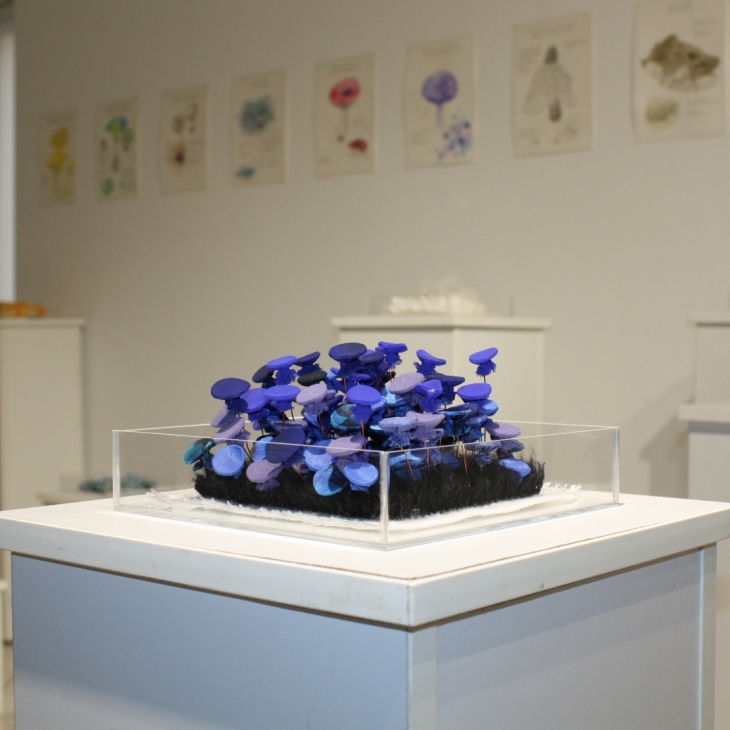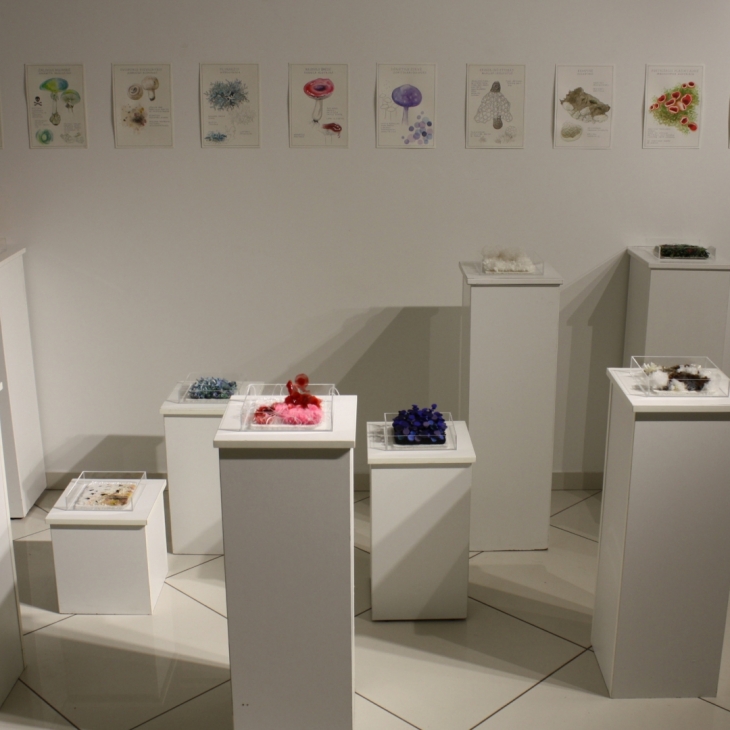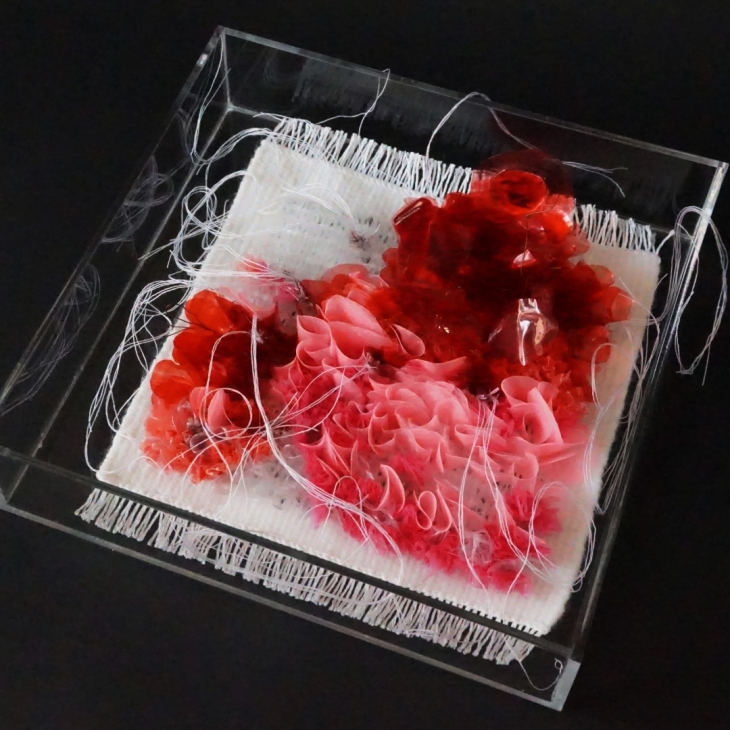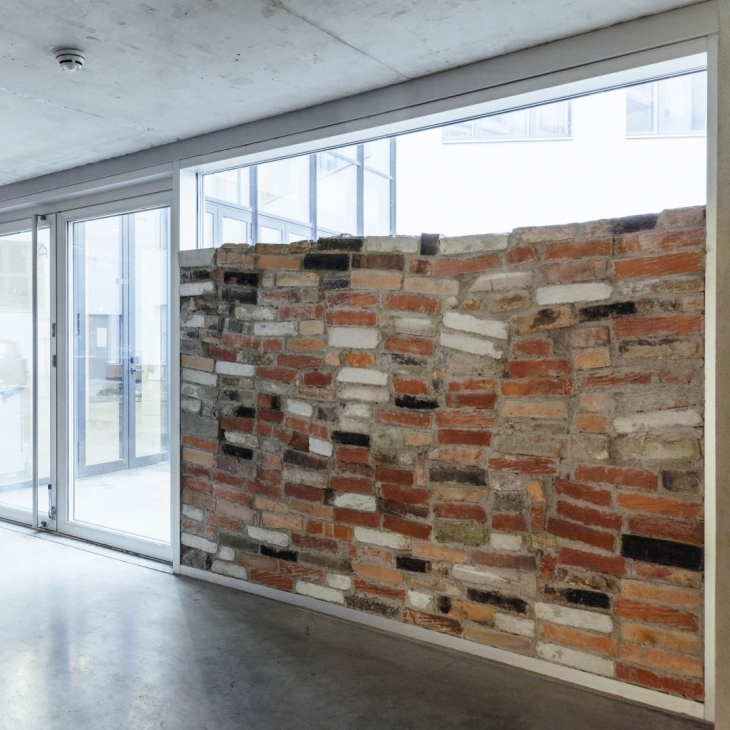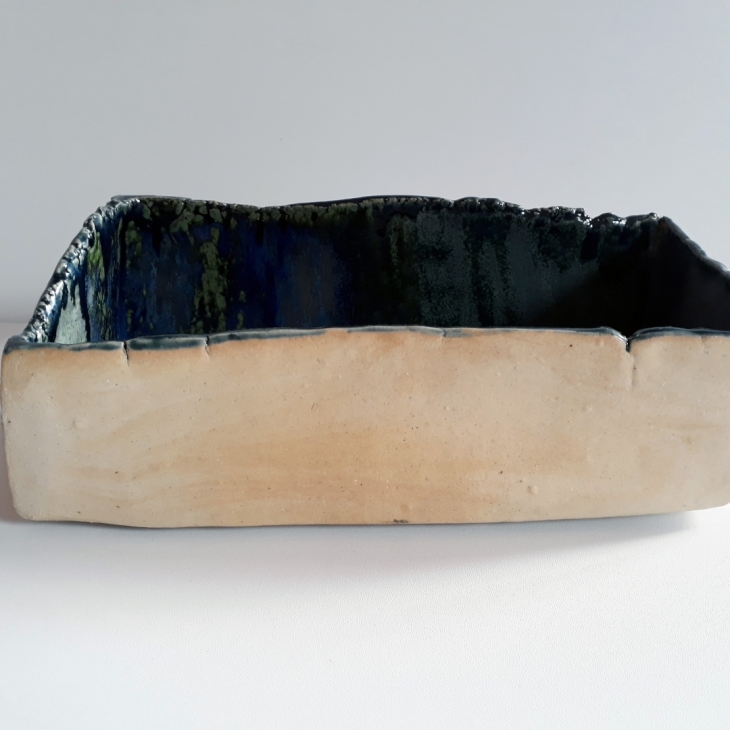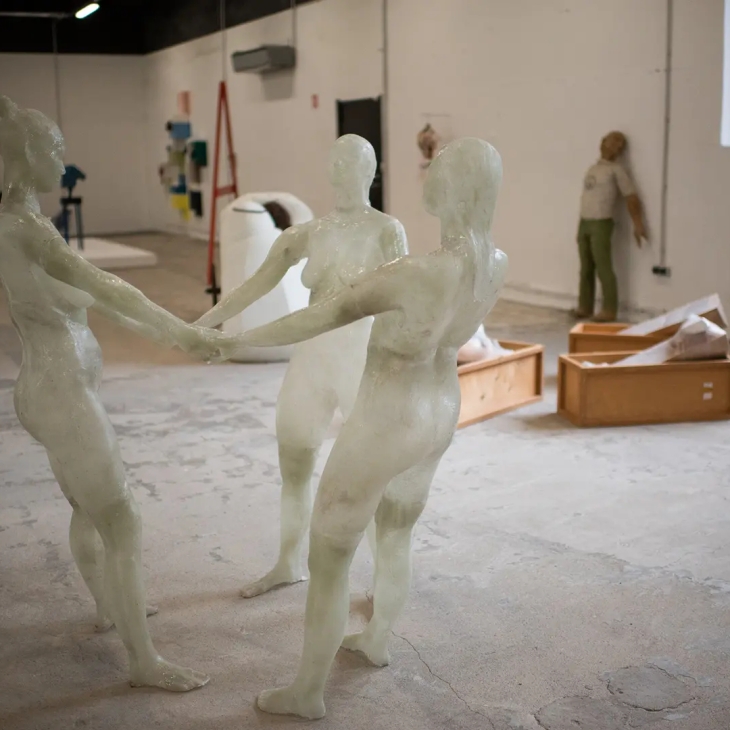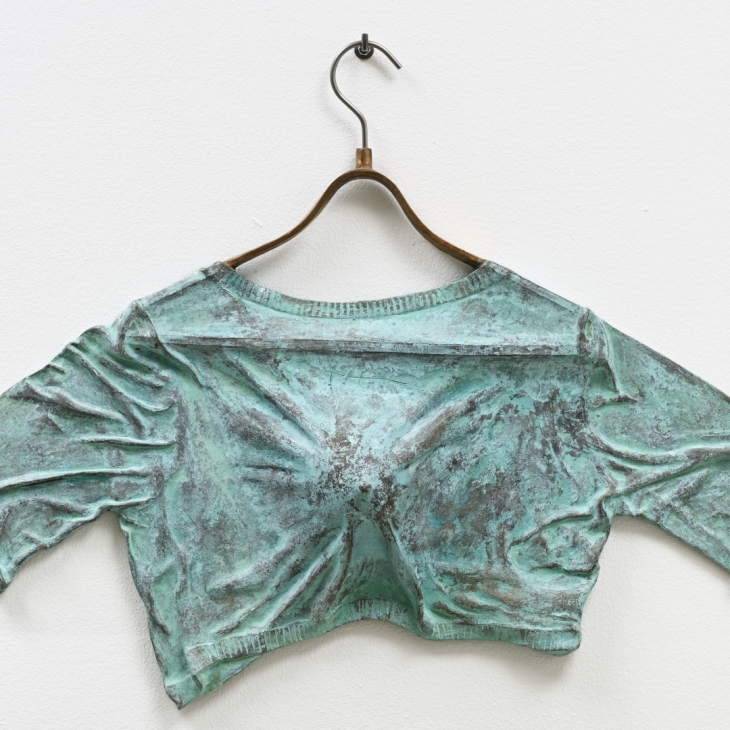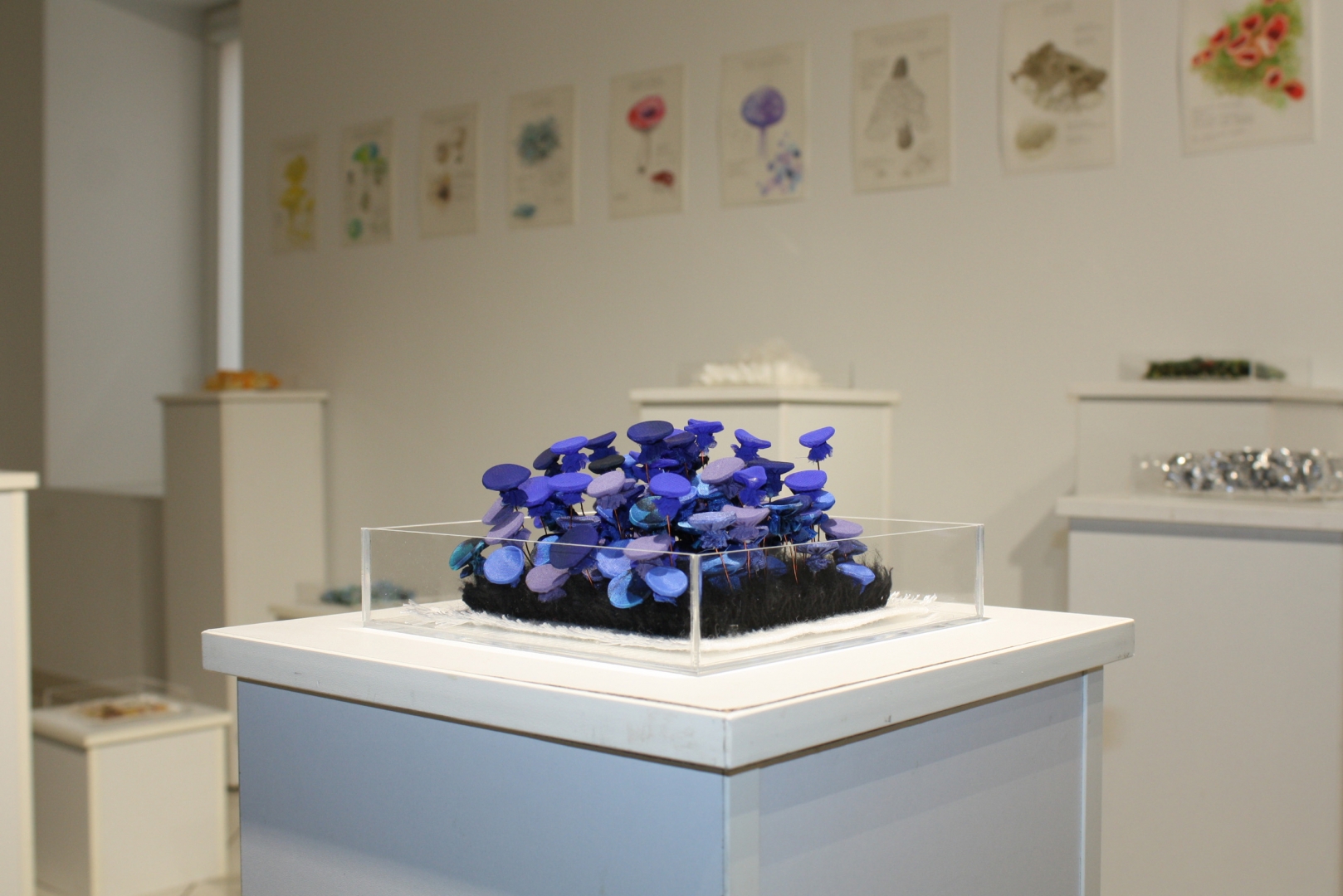Textorium Fungarium, 2020
Threads (wool, acrylic, polyester, cotton), plastic, metal, silicone, synthetic fabrics, paper. The artwork consists of 10 miniatures representing my created fictional Fungarium. Each miniature represents a different mushroom. In this project, I was exploring 10 different mushroom species. Inspired by their characteristics and extraordinary structures I created the miniatures using traditional carpet weaving technique combining it with non-traditional materials. From a white and clean piece of textile grows various shapes. The net of warps and wefts is like a mycelium lying in the first layer of the forest. Further from this intertwined root structure grows a surface mycelium. I copy all this from nature and transfer it to a glass container. In this way, I create a unique storage of mushrooms transformed through a unique prism of vision. The title of the work “Textorium Fungarium” was chosen to be written in Latin, because in scientific articles, encyclopedias and textbooks the names of mushrooms are always written in Latin as well. To convey the idea, I chose traditional carpet weaving technique. It is three-dimensional. Thanks to this feature, the lower layers of the forest and mushroom fruit bodies are expressed. I used materials such as plastic, synthetic fabric scraps, paper, silicone and metal. I chose the materials not by chance. I tried to look deep into the properties of mushrooms and express them through synthetic materials. The choice of fibers responds to the idea of the work – I expressed the structures created by nature through man-made materials. From naturalness to artificiality: this is a hint of the current situation in the world, when it is becoming more and more unnatural. The new generation growing up in the world’s major cities doesn’t know where food comes from on store shelves, and gets to know flora and fauna through smartphone screens. Vegetables are grown in greenhouses by fertilizing them abundantly, which gives them a flawless look and plastic taste. Artificial lakes are being developed for fish farming. Forests are being cut down for new arable land, which will be depleted and unnecessary in a few years. A person affected by consumer culture tries to recreate everything in his own way, because the goods offered by nature are no longer enough for him. Naturalness is disappearing. In the same way, I erased all naturalness in the Fungarium I created. It is only an artificial copy of nature, which is sometimes more acceptable than a natural object. Thanks to the traditional knitting weaving technique, a new product is created even from waste. A variety of structures can be tied. This creates post-productional art. Art critic and curator Nicholas Bourriaud observes that in post-production art the question “what else can be done?” is not relevant anymore, but the answer of question “what can we do with what we already have?” is being searched. For me personally, this global issue is interesting and relevant. So, I started researching it in my art project. The miniatures are accompanied by an informative visual supplement consisting of 10 sketchy mushroom drawings with names and descriptions. They show the structure and properties of each fungus.

